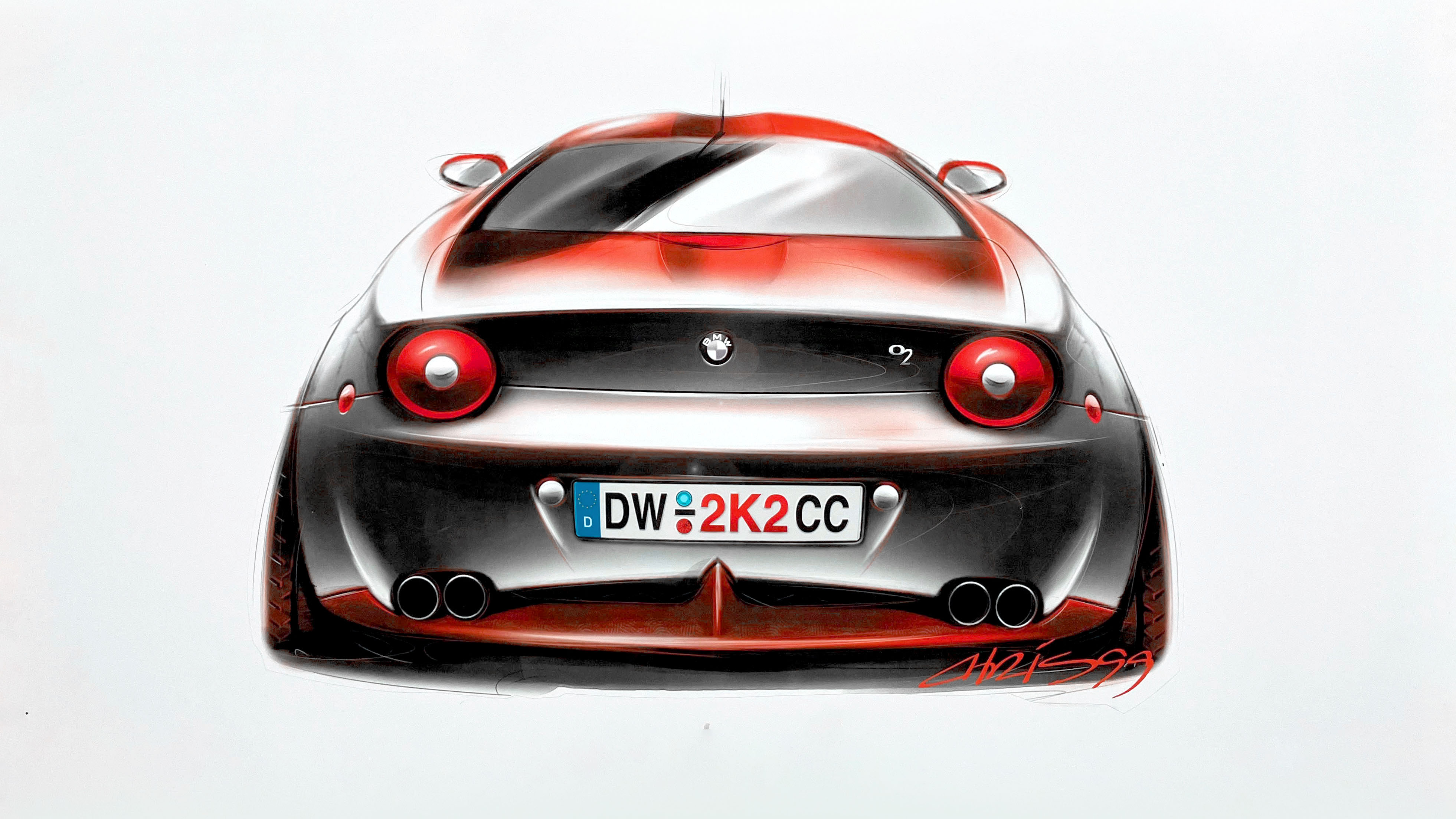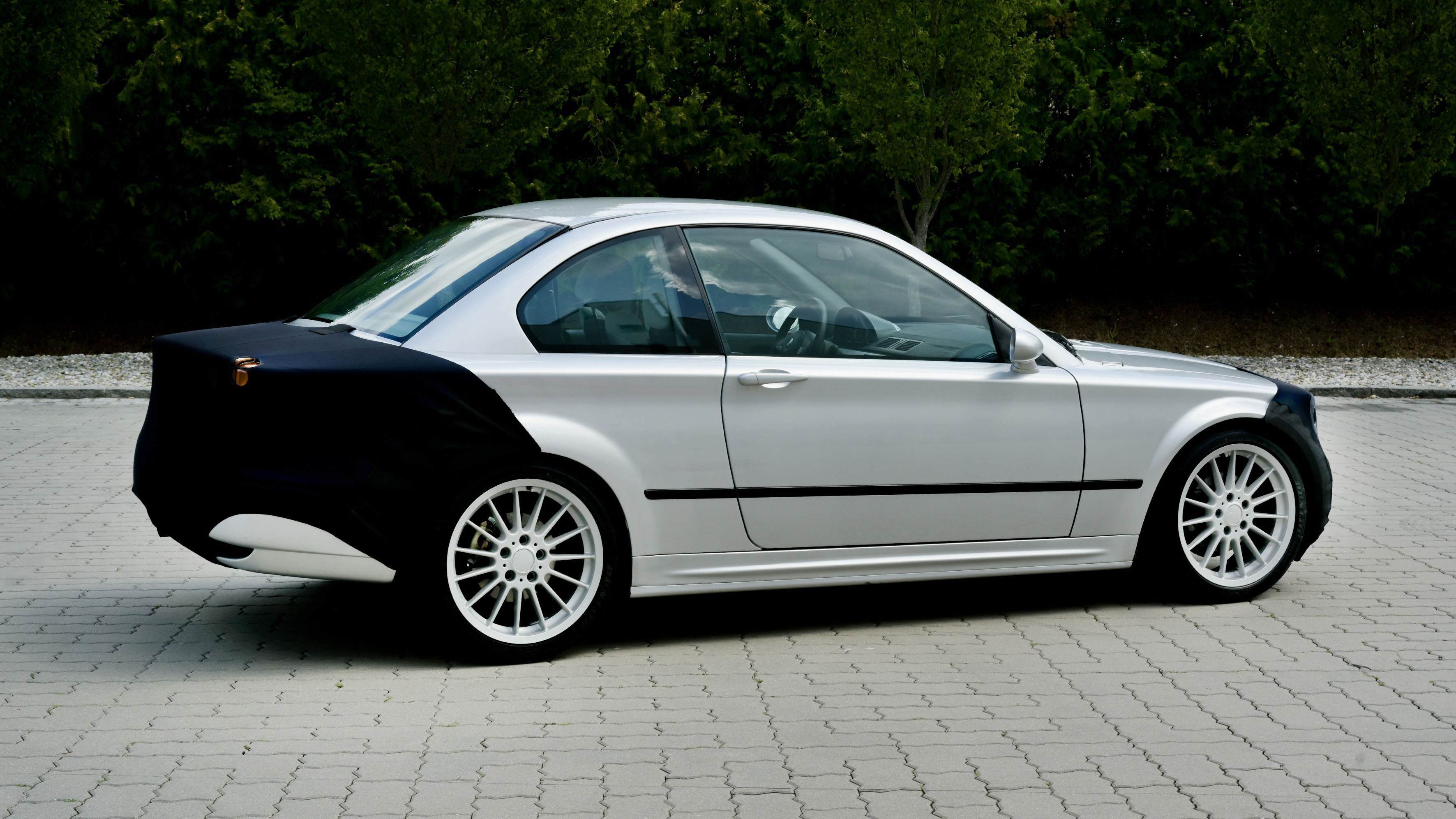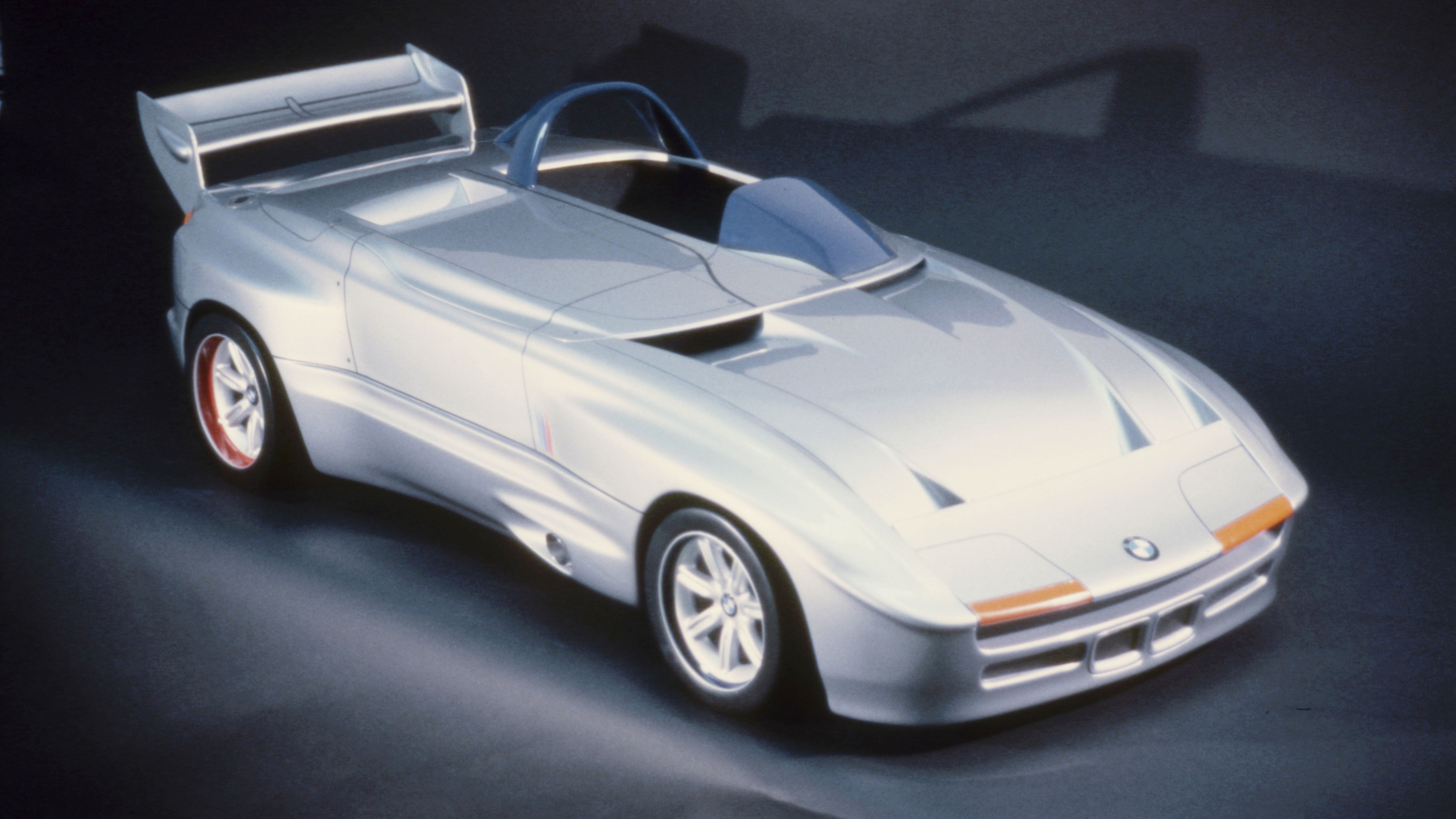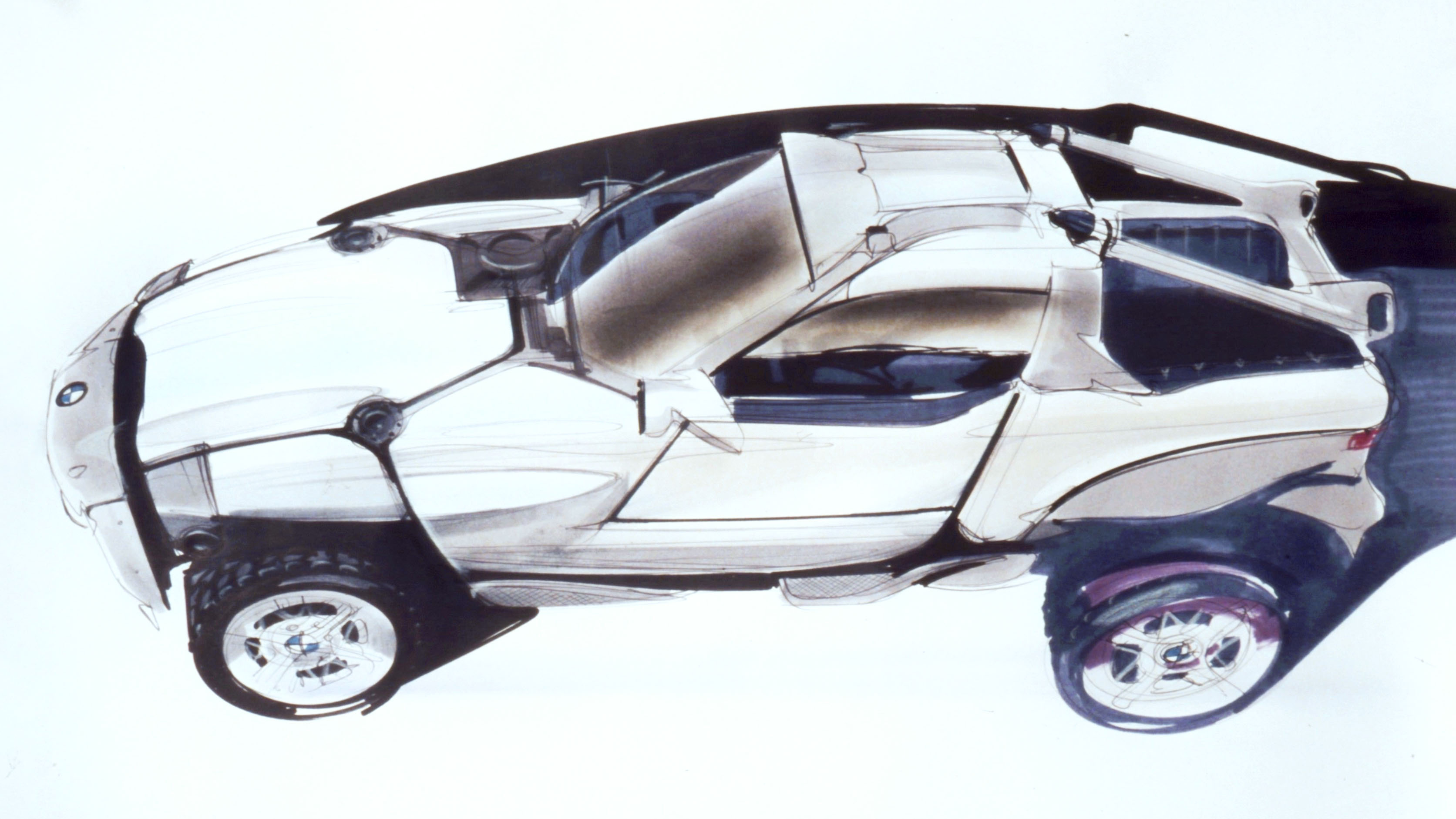
Behind closed doors: the secret BMWs that never made it
A new book gets unfiltered access to BMW Design’s cutting room floor. These are the projects that could have been...
"A full-fat driving experience as a gateway to bring younger buyers into the BMW world."
It’s quite a billing, and a production version of the BMW 2K2 - pictured above - could have been quite the car. The idea is deliciously simple, however closely it nudges tweeness: rekindling the 2002, arguably BMW’s most revered classic, for the year 2002. A cheaper, lither car to provide an entry point into propellor-badged ownership but without skimping on thrills.
“The car would weigh under 1,000kg and provide BMW performance for a fresh audience,” muses Steve Saxty, author of the new BMW Behind the Scenes book trilogy and one of only a tiny handful of people to see the 2K2 up close since its late Nineties tour of the BMW board. “There’d be no radio, the idea being that its owners would only stick a different one in anyway. Save cost for the customer so you can give them all the guts of an E46 3 Series coupe in a simpler package.”
Photography: BMW/Steve Saxty
It sounds an utter riot, and so it proved in testing. Yes, the silver car in the gallery above is a fully running prototype, not a smartly sliced piece of clay capable of trundling no quicker than walking pace. Designer Ralf Langmeier, a crucial player in the 2K2 story and now a senior figure at Rolls-Royce, remembers testing it at BMW’s Aschheim test track.
“We all sat there, with fire extinguishers in our laps, and off we went, benchmarking it against a high torque BMW 330 diesel. The 2K2 had a lowered differential ratio, so it really took off and it beat the 3 Series right up to 180kph [112mph].” The car’s genesis involved several different designers and numerous moments in late Nineties BMW politics, but the company’s ownership of Rover is crucially entwined. BMW wanted a new compact car that would beguile buyers more than the awkward 3 Series Compact, but the board ultimately only sanctioned one – deciding to pump its money into the forthcoming Rover R30.
“The 2K2 would do a volume of around 30,000 cars a year,” reckons Steve, “which in those days was just not worth your time. The hatchback market would instantly mean 100,000. Were it not for Rover, they probably would have made this.” It doesn’t take a committed historian to point out that BMW sold Rover before the turn of the century and no R30 ever surfaced in showrooms. Thus, Langmeier was part of a team entrusted to breathe life back into the 2K2 project – only this time as a more lucrative hatchback. That hatchback being the BMW 1 Series.
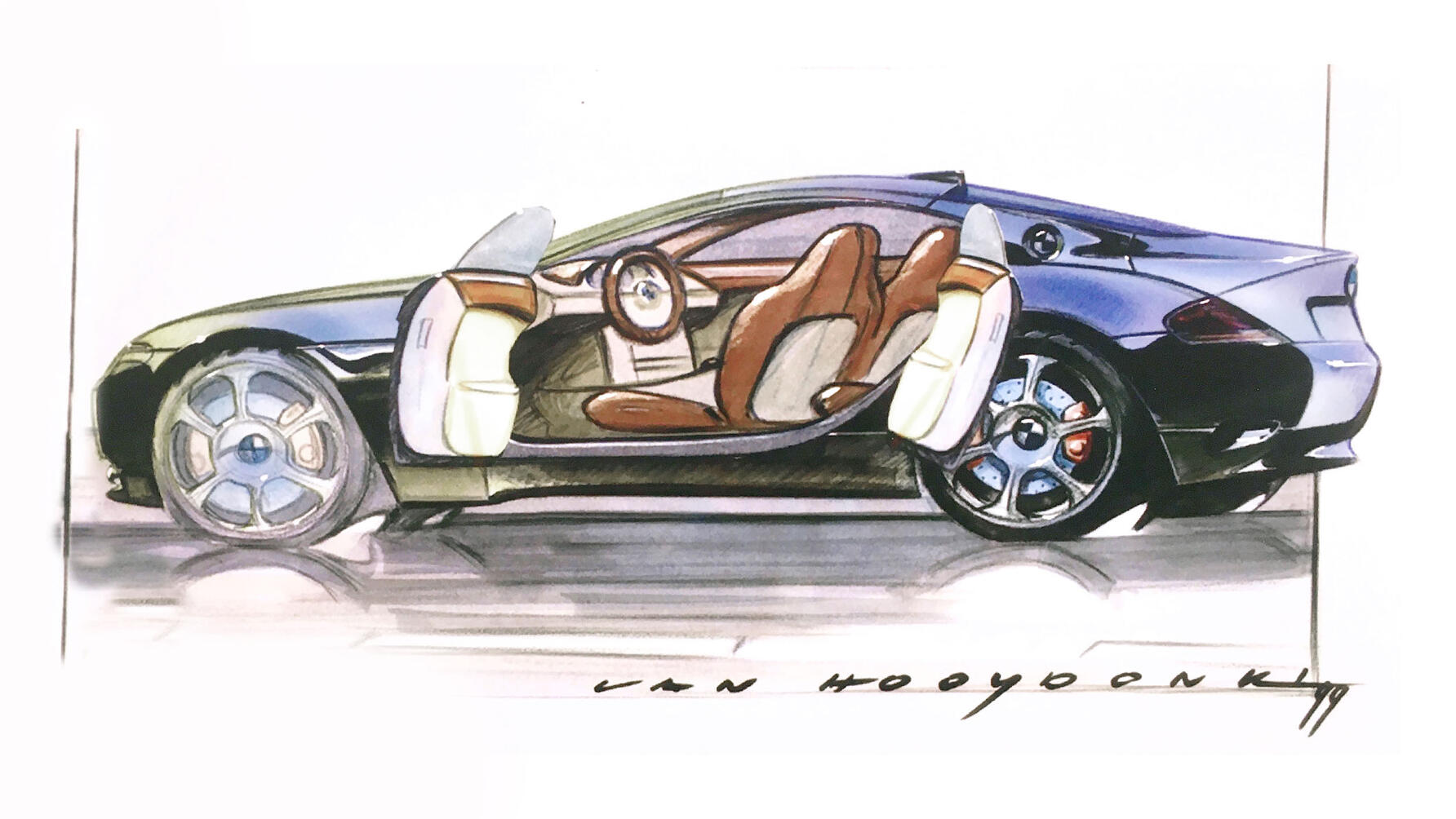
Where the 2K2 was going to be a lightweight two door with a composite body – an idea of Langmeier’s, who’d restored a 2002 cabriolet as a student and wanted to prove the concept of quick paced, low volume composite specials – the car it eventually morphed into was a conventional sheet metal hatch. The possibility of rear-hinged ‘occasional’ doors floated around a lot during this era of BMW concept design (see above), skipped the finished car and was limited to a brief cameo on the reborn Mini Clubman and BMW i3.
Chris Bangle, BMW’s then design chief, was adamant its new compact should still launch as a coupe with more conventional three- and five-door body styles to follow. While marketing overruled him, the ghost of the 2K2 in the side proportions of the eventual 1 Series Coupe (released in 2007) is evident. Although its high performance 1M iteration used six-cylinder power, eschewing the 2K2’s simpler, more efficient four-cylinder status, the giant killing punch of the original concept did at least live on. Just at a price that evaded any notion of an ‘entry point’ and – thanks to the 1M’s instant classic status – still does. Shame.
BMW in the Eighties and Nineties seems to have been a wonderfully inventive place, in fact. If you thought the production Z1 roadster was wild, with its iconic dropdown doors, then a glimpse of its unseen siblings will boggle your eyes. They were all born out of BMW’s new Zukunft Technik – Future Technology – department. Led by Ulrich Bez, former Porsche and eventual Aston Martin man, this operated as a separate company. “Their goal was not to design road cars,” says Saxty, “but to act as a freewheeling skunkworks able to create fresh engineering concepts.”
Top Gear
Newsletter
Thank you for subscribing to our newsletter. Look out for your regular round-up of news, reviews and offers in your inbox.
Get all the latest news, reviews and exclusives, direct to your inbox.
A hypothetical Z family encompassed a roadster, coupe, saloon and even EVs and motorcycles, not to mention some incredibly forward-thinking small crossover concepts that look much more rugged (and charming) than a modern day X2. But that’s not the Z1 offshoot we’re most mournful for. Technik chief engineer Harm Lagaay was a motorsport enthusiast who quickly clocked that BMW’s M12 engine – the 1.5-litre four-cylinder turbo used in Formula One across the Eighties – would slot neatly into the Z1. His proposal was to meld the two together for an attack on the twisting 12.42 miles of the Pikes Peak hillclimb.
“BMW chose to retire from F1 in 1987,” says Saxty, “even though the M12 had been tweaked to make more than 1,000bhp in qualifying trim. Pop that power unit in a single-seat Z1 that weighed little more than a contemporary F1 car and the opportunity to grab headlines was clear.”
Sadly the true skunkworks spirit of Lagaay’s idea never fully matured; a muscular concept was made in detailed scale model form for visual evaluation and wind tunnel testing, but wider Technik enthusiasm for the project faltered, right as Pikes Peak blipped on many an enthusiast radar thanks to Ari Vatanen’s achingly cool Climb Dance video.
But we all know the one car we truly wish BMW had made: a bona fide supercar to live up to the inaugural M division car, the wedgy M1. The composite structure of the pioneering i8 hybrid came tantalisingly close to yielding one, too.
Saxty’s research reveals at least 10 official attempts to rekindle the M1’s glamorous halo effect, perhaps enough to fill their own book someday. But it appears the most recent occurrence got as close as any. Previewed by the Vision M Next concept in 2019 and using a plug-in hybrid powertrain to help signal M division’s future philosophy – not least that of the next M5 – the pieces were slotting together nicely. Three designers worked alongside the engineering team to morph concept to oh-so-near reality in a quick snap 12 months and the i16 was the result.
While its side windows signal shared DNA with the i8, clever work on its proportions, a stunted tail in particular, help it resemble a fresh model. A much more potent one, too. Where the i8 used a 1.5-litre three-cylinder engine and peaked at 369bhp, the i16 was expected to pair BMW’s modularly related B48 2.0-litre four-cylinder turbo with e-motors for an output closer to 600bhp and 0–62mph in around three seconds.
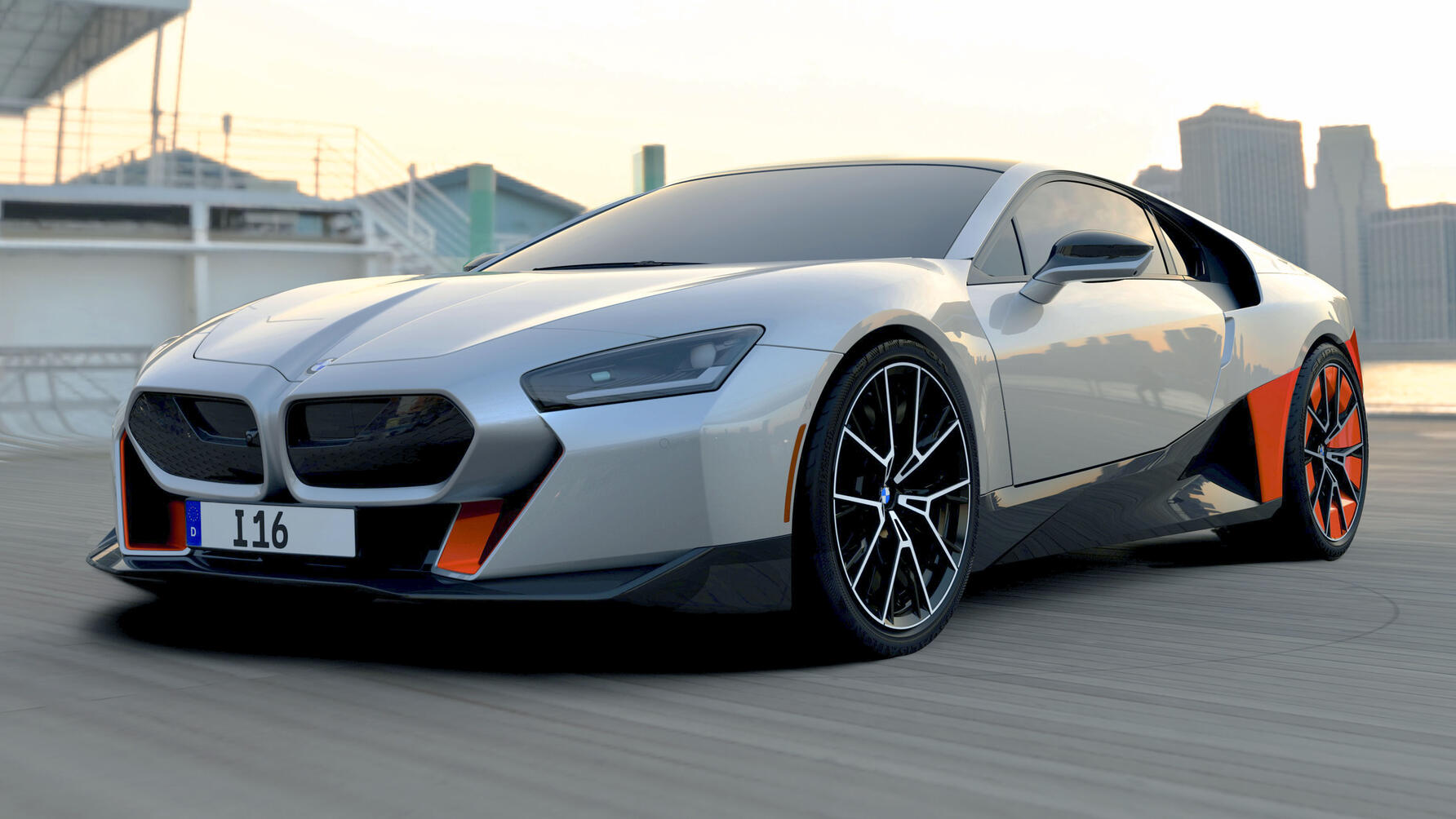
“BMW keeps wanting to bring back the M1,” says Saxty. “But getting 20,000 fans excited on Instagram is easier than finding 20,000 customers. That’s why we get performance SUVs like the XM. Porsche started it all with the Cayenne and Lamborghini, Aston Martin, Maserati and Ferrari progressively piled in. For BMW to enter the supercar space just as the established makers were diversifying out of it was a big risk.”
Not to mention the i16’s development nudging into 2020 and the unforeseen turmoil of a global pandemic. “History was not to be made,” lamented BMW’s current head of design Domagoj Dukec in a recent post. “While we pushed, the world changed in 2020. Work on the project unfortunately had to be stopped.
“But that’s how life goes sometimes. As designers, we are familiar with the twists and turns of such projects. Nevertheless, we’ll never stop dreaming and exploring new possibilities, and there’s always a new project waiting around the corner.”
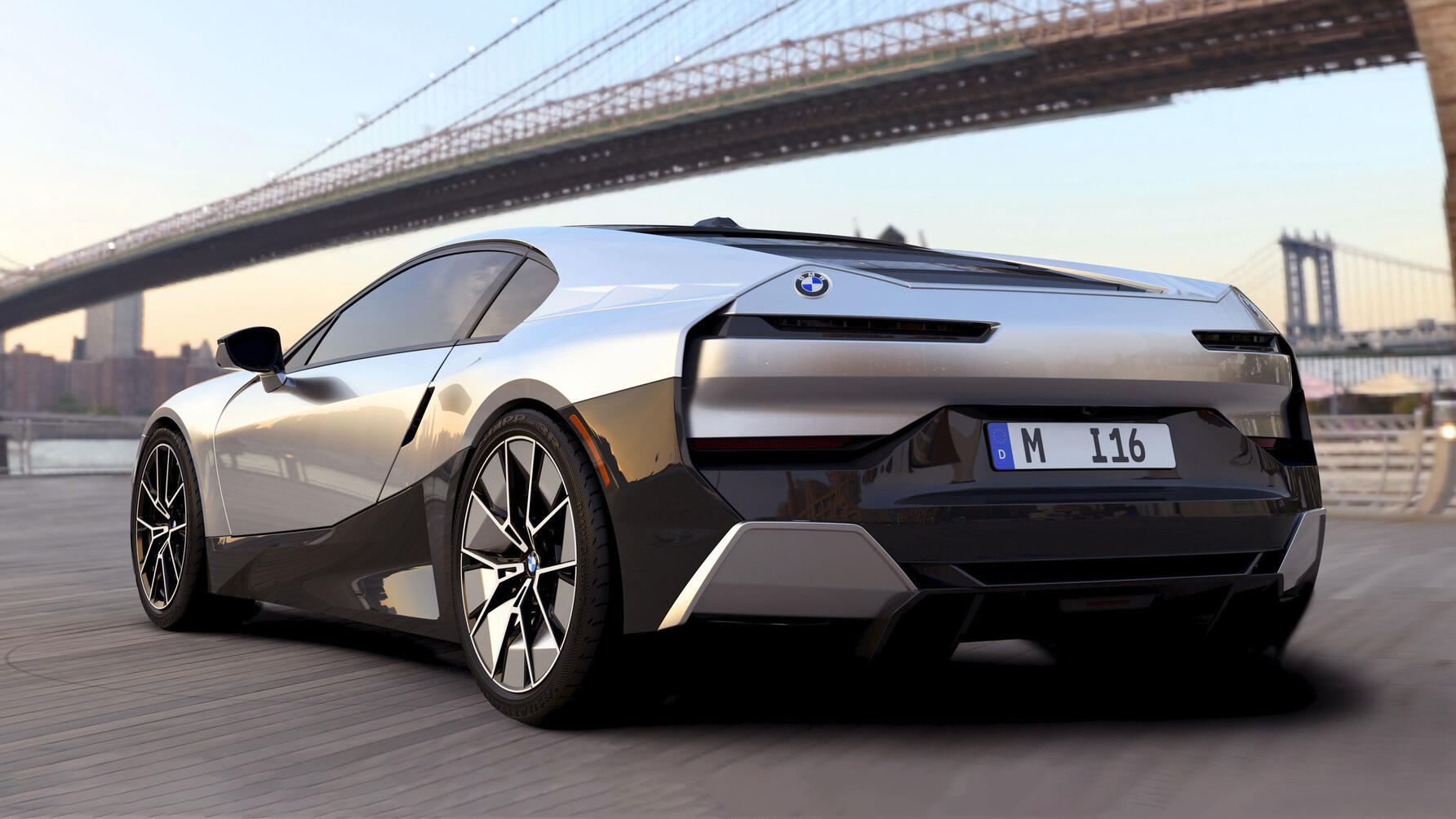
These stories and many more are told in Steve Saxty’s new BMW Behind the Scenes three-book box set. Visit stevesaxty.com/bmw for details
Trending this week
- Car Review
BMW iX3





